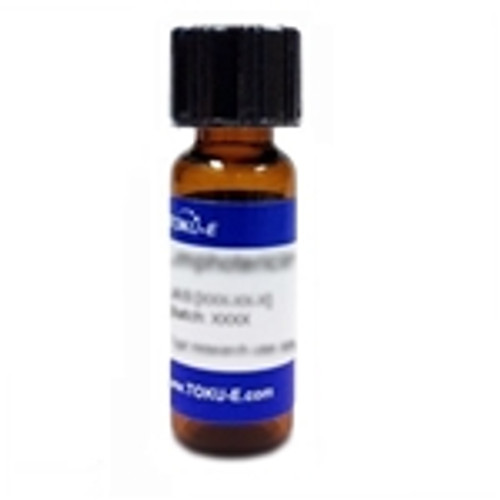Nosiheptide is a broad-spectrum bicyclic thiopeptide antibiotic produced by several species of actinomycetes (ie Streptomyces) and was first reported by Japanese researchers in 1970. It has a prolonged post-antibiotic effect in both nosocomial and community-acquired MRSA. Despite its long history in animal health research, Nosiheptide has not been extensively studied.
Nosiheptide is soluble in ethanol, methanol, DMF and DMSO.
| Mechanism of Action | Nosiheptide impacts bacterial protein synthesis in a similar fashion to that of thiostrepton. However unlike thiostrepton, the second macrocyclic ring is linked by relatively fragile lactone and thiolactone bridges to the core cyclic peptide. Nosiheptide inhibits the elongation factors Tu and G and greatly reduce the synthesis of guanosine penta- and tetraphosphates. This involves pentose-methylation of 23S ribosomal RNA. Research suggests that the Nosiheptides biosynthetic machinery can lead to engineering novel thiopeptides for drug discovery (Yu et al, 2009). |
| Spectrum | Broad-spectrum, effective for Gram-negative and Gram-positive bacteria. It is also effective against MRSA. |
| Molecular Formula | C51H43N13O12S6 |
| References |
Cundiffe E an Thompson J (1981) The mode of action of Nisiheptide (multhiomycin) and the mechanism of resistance in the producing organism. J. Gen. Microbiol. 126(1):185-192 PMID 7038038 Endo T and Yonehara HJ (1978) Identity of multhiomycin with Nosiheptide. 31:623 Haste NM et al. (2012) Activity of the thiopeptide antibiotic, Nosiheptide, against contemporary strains of methicillin-resistant Staphylococcus aureus. Antibiot. 65:593 Pestka S and Bodley J (1975) Thiostrepton group of antibiotics. In: Antibiotics. III. eds. Corcoran JW. & Harn FE., Springer-Verlag, New York. pp 551-573 Tanaka T et al (1970) A new antibiotic, multhiomycin. J. Antibiot. 23:231 |



